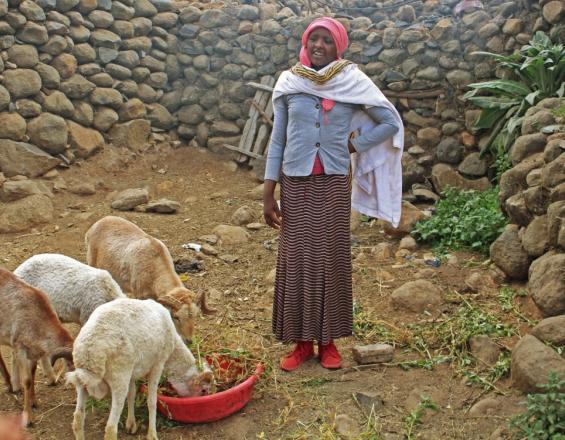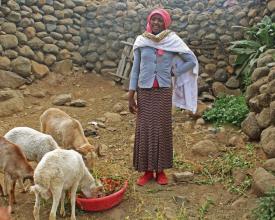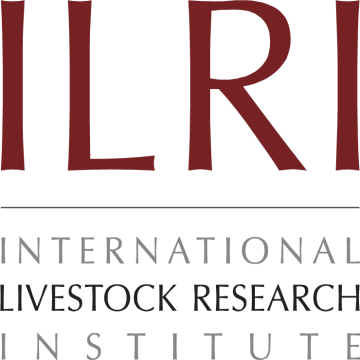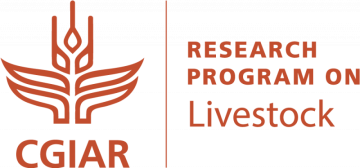
A scaling approach targeting youth as promoters of market-oriented sheep fattening

To improve incomes from sheep fattening in rural Ethiopia, a new community took an approach that leveraged youth as influencers and promoters to scale up the adoption of improved sheep fattening technology and practices. Youth received a start-up package, participated in youth group training, received support from a community of practice, and disseminated their knowledge by organizing field days. Sustainability is demonstrated through the continuation of this approach despite the project end.
Contexto
Défis à relever
Unemployed youth in Ethiopia live mostly in rural areas, where farming is the traditional livelihood. Ethiopia faces a shortage of land in parts of the highlands where population densities are very high and farm sizes are very small, thus solutions must consider interventions that allow for small farms and/or grazing on public lands. Sheep fattening is a long-standing practice in Ethiopia targeting festive seasons, perceived to be a low-risk activity and more profitable than large ruminants. Fattened rams using commercial techniques accrue higher net profit compared to traditional techniques in Ethiopia. However, there has been minimum progression by farmers towards commercial-based fattening due to challenges including feed scarcity, poor husbandry practices, disease prevalence, labour shortage, and poor market access.
Ubicación
Procesar
Summary of the process
The connection is that the youth groups share their new skills and knowledge with the wider community of farmers. Open field days allow the youth groups to do this. Indeed, open field days organized by the youth groups themselves help promote ownership, management practices and business development in the wider community. Helping the emergence of cooperatives with a to-do mindset and skillset fit for the business. With better knowledge of finance through open field days and training, the youth groups and the community have easier access to loans. Then, the CoPs help feed into the youth groups through innovative actionable ideas and ways forward. Finally, linked to the cooperative’s development through community-based breeding programs, the youth groups are better organized which serves to disseminate improved fattening practices.
Building Blocks
Open field days
Open field days were organized by the youth groups served to disseminate improved fattening practices to farmers in their communities. All activities were free of charge and included training, experience exchange, sheep vaccination, deworming, and castration services. Open field days organized by the youth groups served to disseminate improved fattening practices and knowledge to farmers in their communities. All activities were free of charge and included training, experience exchange, sheep vaccination, deworming, and castration services.
Enabling factors
- Free of charge
- Local knowledge
- Technical and entrepreneurial training
- Supportive enabling environment
Lesson learned
The benefit and sustainability of utilizing local feeds should be emphasized; several farmers were disappointed because they did not receive commercial concentrates.
Youth groups
Formed with the objective of training youth on improved sheep fattening technologies and practices and entrepreneurial skills development, Youth groups were overseen by CBBP cooperatives and mentored by a champion farmer. Youth groups are further supported by Communities of Practice (CoP), which develop actionable ideas, knowledge, and policies to promote innovations in sheep fattening. CoPs are composed of researchers, key sheep value-chain actors, Government experts, and administrators. A total of 485 youth (287 male; 198 female) participated in 44 youth groups across 29 sub-villages, within 6 districts of the 2 regional states of Amhara and Southern Nations, Nationalities and Peoples' Region (SNNPR).
Enabling factors
- Free start-up package
- Mentorship
- Development of actionable ideas, knowledge and policies
- Supported by CoPs
Lesson learned
Shifting attitudes and mindsets towards a business-orientation is challenging; some youth are still at a stage in which they spend their earnings immediately without setting aside savings. This approach of creating an enabling environment for sheep fattening and providing start-up inputs to youth has demonstrated reproducibility across 29 sub-villages in Ethiopia. Legally organized groups also have better access to loans (for expansion of sheep fattening) from microfinance institutions, thus the formal registration of groups should be facilitated.
Impacts
- Increased entrepreneurship: At least 412 youth have increased ram numbers from 0-1 to more than 6 rams per fattening cycle, and 437 youth are undertaking 3-4 fattening cycles per annum, up from 2.
- Fatter sheep: Fattening rams have increased average daily weight gain from between 56-122g/day to 94-198g/day (44-67%), while utilizing only locally available feed resources.
- Higher-income: Participating youth were able to sell sheep from between ETB 1200-2500 to ETB 2200-4000, an increase of 45-70% higher price than sheep fattened by traditional methods, and their incomes increased by an average of ETB 15000 ($500) in the first year consisting of 3 fattening cycles.
Beneficiaries
Primary beneficiaries: youth ages 15-32
Secondary beneficiaries: community farmers
Sustainable Development Goals
Story
In addition to increasing her income, 18-year old Tesfanesh shares her experience: “I was a village girl who couldn’t speak much in front of men. After becoming a group member, I have become a girl with high self-esteem and confidence.”





